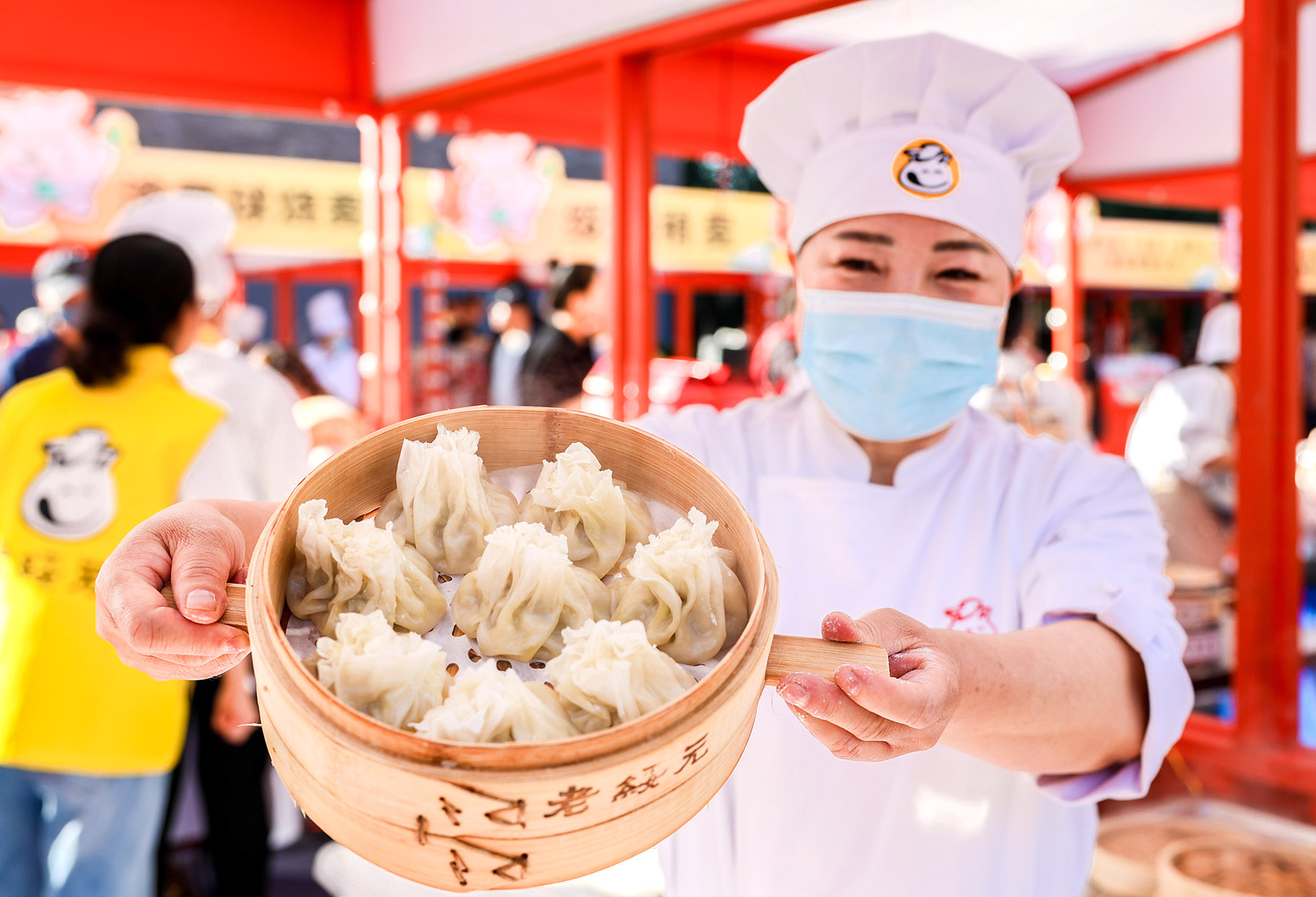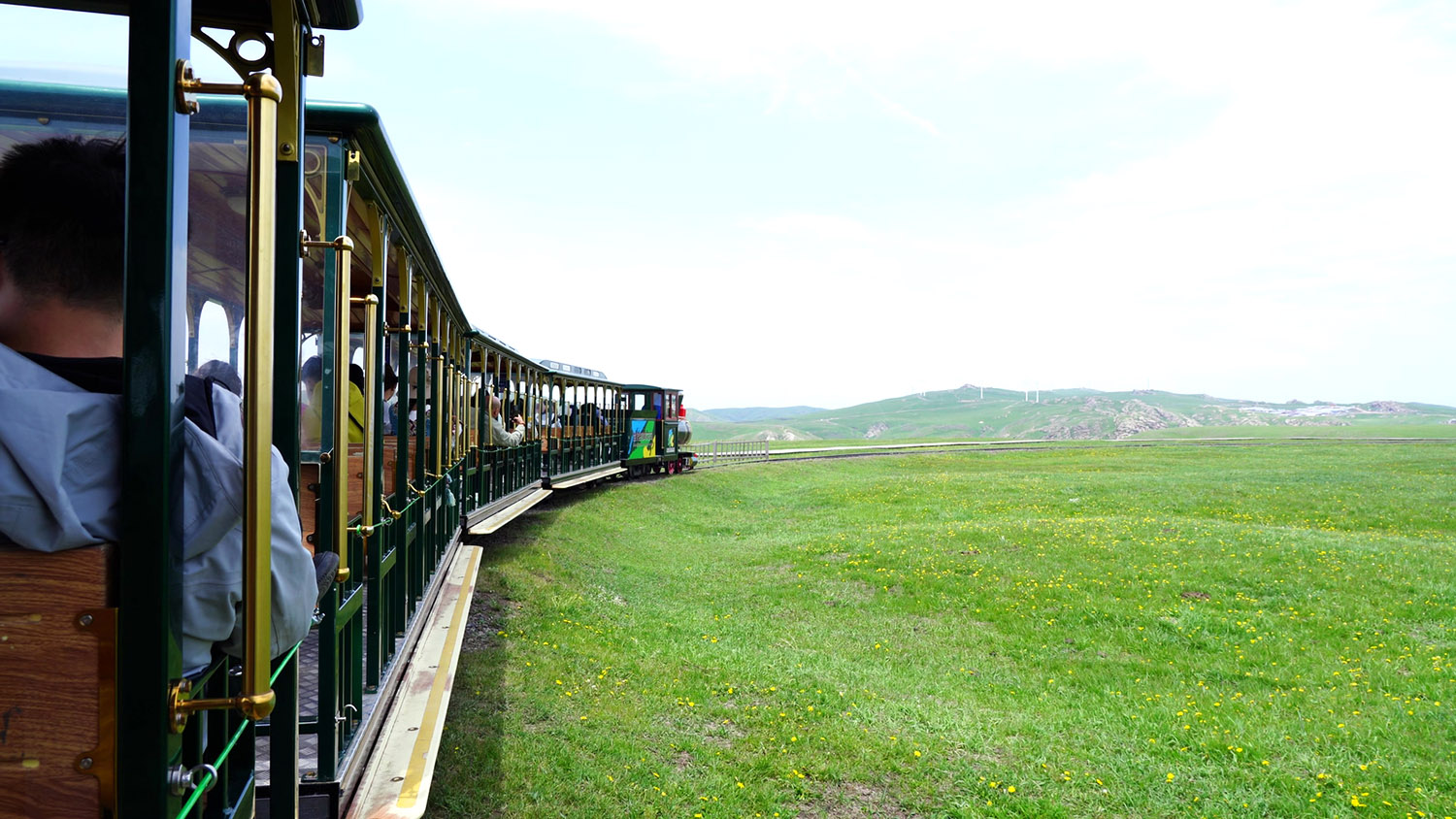Inner Mongolia, once a land of nomads, now beats with a modern heart, offering summer retreats, musical roads and delicious cuisine, Fang Aiqing and Yuan Hui report in Hohhot.

Editor's note: China Daily reporters leverage local expertise to devise different itineraries that showcase a blend of historical landmarks and natural wonders in highly recommended cities and sites, offering practical guidance to experience the country.
A melodious verse from the Northern Dynasty (386-581) shapes the initial impression of many Chinese people toward the vast grasslands in the north: "The yurt-like sky holds the vast green land within. Beneath its azure canopy, the infinite wilderness thrives. The wind bends the grass low, revealing sheep and cows."
This vivid image conjures up associations with Chilechuan, the plains of the Chile (Tiele) people, a northern nomadic tribe which once resided at the foot of the Yinshan Mountains in the present-day Inner Mongolia autonomous region. It remains a name steeped in curiosity and memories.
Indeed, for those planning to catch a glimpse of the majestic grasslands, Inner Mongolia would be an inevitable option. Stretching over 2,400 kilometers from east to west, like a crown capping the nation at its very north, the autonomous region covers more than one-tenth of the country's land.
READ MORE: Urban travelers seek pastoral peace
This expansive terrain, most of which is perched on a plateau more than 1,000 meters above sea level, boasts varied landscapes — temperate prairie, alpine meadow and desert steppe — framed by dense forests to its east, fertile plains in the south and a sprawling sea of dunes in the west.
Summer's copious rainfall revives the grasslands, transforming them into lush green canvases. Wildflowers bloom, livestock graze, wetlands glisten, and the sun paints the sky with golden and ocher hues — all revealing an inclusive, tender soul of the plateau's wild heart.
It's hard to tell where exactly the extensive land of Chilechuan was located due to the lack of records. But, throughout history, the Yinshan Mountains have held geographical and strategical importance. Extending more than 1,200 km east-west in central Inner Mongolia and northern Hebei province, they marked the boundary of subhumid and semiarid climates and delineated the divide between agricultural and nomadic civilizations.
Hence, war, trade and cultural integration all took place here. Portions of the Great Wall and border towns were built across dynasties. Artifacts that blend multiple cultural styles were discovered. Lines of poetry were passed down.
Over the years, Zhang Wenping, director of Hohhot's institute of cultural relics and archaeology, which was founded in the regional capital of Inner Mongolia in November, has been studying the northern nomadic tribes that historically thrived in Hohhot, once called Shengle.
In 258, the Xianbei tribes settled along the banks of the Dahei River and built the ancient city of Shengle as their winter base. The regime later established its capital there, gradually campaigned southward, and eventually founded the Northern Wei Dynasty (386-534), ruling over some core parts of the Central Plains region and actively promoting cultural integration.
The Chile tribes were also known as Gaoche, named for the large-wheeled carts they used to travel through tall grass, thick snow and marshlands. Following their defeat by the Xianbei people in the early 5th century, the Chile nomads served as border guards for the Northern Wei Dynasty (386-534) around the Yinshan Mountains area, situated north of its agricultural zones, Zhang explains.

He says the above-mentioned verse was originally a pastoral song in the Xianbei language that has been lost to time. It describes a scene of the undulating hilly grasslands, where Chile nomads herded, flourished by a kind of slender, white fluffy herbage that grew taller than regular grass. As herders rode galloping horses, the sheep and cows in the distance seemed to vanish and reappear amid the swaying grass rustling in the wind.
Today, a restored plain just 15 km from downtown Hohhot re-creates that vision. Set against the backdrop of the towering Daqing Mountains, part of the Yinshan range, this area has been developed since 2012 into a leisure retreat.
Visitors stroll, cycle and camp here, enjoying a pastoral interlude close to urban life.
The Chilechuan Grassland seeks to revive the memories that historically defined the land of Hohhot at the foot of the Yinshan Mountains: a former frontier of dynastic governance and the gradual integration of northern nomadic tribes into Chinese civilization — a subject Zhang has studied for decades.
About an hour and a half's drive from Hohhot — or some 400 km from Beijing — lies a well-preserved alpine meadow, the Khuitenshil Grassland in Ulaanqab's Qahar Right Wing Middle Banner, spanning the eastern slopes of the Daqing Mountains at an average elevation of 2,100 meters.
At its western end lies Huanghuagou (Yellow Flower Ravine), a 10-km stretch with a depth of 300 meters, popular with summer tourists.
Sightseeing trams shuttle through the grassland as wind turbines spin in the distance. Animals graze, undisturbed by the intermittent grass waves in the wind or the fleeting shadows of the passing clouds.
Close by, wildflowers burst into view — white, yellow, pink, blue and purple — some tall and proud, others tiny and delicate, dancing in the breeze.
Wang Ning, a local official who frequently visits the Huanghuagou Grassland Tourism Resort for work, says each time he comes, the meadow presents a fresh palette, with the colors vying for dominance over time, unable to wait even for a week.

According to him, the tourist resort received 4.26 million visitors last year, generating a revenue of 1.92 billion yuan ($267.7 million), both marking a 29 percent increase year-on-year.
The cycles of growth and decay on the grasslands have taught locals a deep respect for transience and endurance. Wherever stones are plentiful, people stack prayer cairns. On exposed hillsides, Tibetan Buddhist images and inscriptions emerge from massive boulders.
Mongolians build ovoo — stone mounds adorned with colorful prayer flags — on mountaintops to worship, pray for harvest, or mark the road ahead.
At the summit of the Liaowangshan (Lookout Mountain) scenic area in the Xiliin Gol League, which is believed to derive its name from a tale involving Genghis Khan (1162-1227), a well-furnished ovoo has been built, dedicated to the legendary ruler. From there, rolling green hills dominate the horizon.
Liaowangshan is located alongside Route 99, a scenic highway around 120 km from Xiliinhot, a major city of the league. Route 99 and the adjacent highways are a paradise for roadtrippers.
Motorcycles and cars stream in from all over the country. Some groups, like one flying the flag "Two wheels, one family", bond over the shared love of travel. Along the route, a rare birch forest invites picnics and exploration. A newly opened 1.3-km "musical road" plays tunes as cars pass, adding a playful touch.
ALSO READ: Tradition meets modern thrills
Of course, no visit is complete without sampling the local flavors. While debates rage over where Inner Mongolia's best lamb is found and how it should be cooked, Hohhot proudly champions its own specialty: shaomai, also known as shumai. These delicate, flower-shaped buns — steamed or pan-fried with thin crystal wrappers and savory mutton filling — are often eaten with brick tea.
Local shaomai are typically sold by the weight of the wrapper. Normally, 50 grams of dough can produce eight shaomai with fillings nearly five times the amount.
This traditional Hohhot breakfast has given rise to a bustling downtown street with dozens of shaomai restaurants.
Wang Zhiqiang, secretary-general of Inner Mongolia's shaomai industry association, said in a recent interview with Hohhot Daily that the wrappers are made from Bayannuur wheat, the lamb comes from Xiliin Gol, and the leeks from Tumd Left Banner. It's a regional symphony of flavors and an apt metaphor for Inner Mongolia's diverse and interwoven cultural landscape.
Contact the writers at fangaiqing@chinadaily.com.cn


